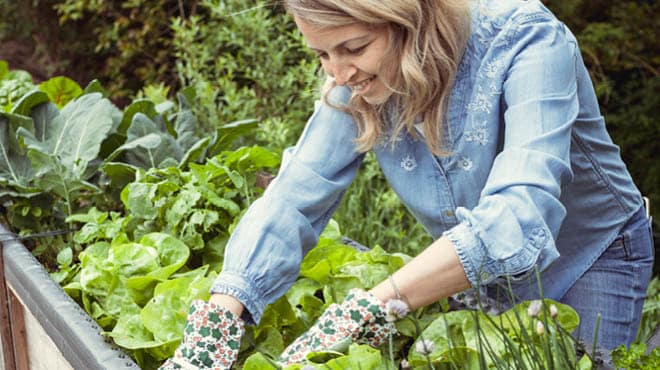Leading Gardening Techniques to Boost Plant Growth and Health
Leading Gardening Techniques to Boost Plant Growth and Health
Blog Article
Understanding the Different Types of Horticulture and Just How They Add to a Healthier Way Of Living and Atmosphere
Advantages of Vegetable Horticulture
Lots of people are significantly acknowledging the myriad benefits of veggie gardening as an essential part of a healthier way of life. Engaging in veggie gardening provides countless physical wellness benefits, including raised exercise, which boosts cardiovascular health and wellness and promotes general physical fitness. The act of planting, weeding, and harvesting calls for activity and can assist fight inactive habits, contributing to weight management and enhanced muscle tone.
Moreover, cultivating one's very own vegetables considerably improves nutritional quality. Native fruit and vegetables is frequently fresher and much more nutrient-dense contrasted to store-bought options, as it can be consumed shortly after harvest. This availability motivates a greater intake of vegetables and fruits, which are essential for protecting against persistent illness.
Furthermore, vegetable horticulture cultivates psychological well-being by providing a therapeutic electrical outlet for anxiety relief and relaxation. The act of often tending to plants can be meditative, allowing people to get in touch with nature and get away the pressures of life. In addition, the sustainable practice of expanding one's very own food reduces dependence on industrial agriculture, adding to environmental preservation and advertising biodiversity. Jointly, these benefits highlight the value of vegetable gardening as a keystone of a healthier lifestyle.
Discovering Flower Horticulture

Along with aesthetic advantages, blossom gardening sustains neighborhood ecological communities. Numerous blooming plants attract pollinators, such as and butterflies, which are critical for preserving biodiversity. The visibility of diverse vegetation can likewise boost dirt health, as numerous plants add to nutrient cycling and enhance dirt framework.
Moreover, blossoms can play a substantial role in promoting sustainable methods. Several gardeners choose for indigenous or drought-resistant types, which need less water and very little chemical inputs. This strategy not just benefits the environment but also motivates accountable horticulture routines.
Inevitably, blossom horticulture functions as a crucial element of a holistic gardening technique. Gardening. By growing elegance and sustaining neighborhood communities, it harmonizes with vegetable gardening and emphasizes the value of nurturing both our physical and psychological health through nature
Container Horticulture Benefits
Container gardening deals various benefits that make it an enticing option for both novice and experienced gardeners. One of the key benefits is its adaptability; containers can be positioned on outdoor patios, balconies, or perhaps indoors, allowing for horticulture in spaces with restricted ground accessibility. This versatility enables individuals in city settings or those with little yards to grow plants successfully.
Furthermore, container gardening gives improved control over soil top quality and wetness levels. Garden enthusiasts can choose particular dirt blends to enhance plant health and mitigate issues like weeds and bugs. The flexibility of containers also allows for very easy moving to make best use of sunshine direct exposure or safeguard plants from inclement climate.
Additionally, container yards can be visually pleasing, providing a possibility for creativity in style. Gardening. They can function as attractive components that enhance exterior or interior spaces while advertising biodiversity by drawing in pollinators
Last but not least, container horticulture can contribute to a healthier way of living by motivating physical activity, as it typically involves training, growing, and preserving plants. Overall, the benefits of container horticulture make it an easily accessible and satisfying technique for those seeking to boost their way of life and atmosphere.
The Rise of Upright Gardening
As city areas come to be progressively crowded, the pattern of vertical horticulture has removed, permitting people to maximize their horticulture potential in minimal areas. This cutting-edge approach he has a good point involves growing plants visite site in vertical structures, such as wall-mounted planters, trellises, or specialized upright yard systems. The allure of upright horticulture exists not only in its efficient use of area however likewise in its visual payment to city settings, changing bare wall surfaces right into lavish green landscapes.
Vertical gardens can be set up in homes, verandas, and area rooms, giving a platform for growing a variety of plants, consisting of natural herbs, veggies, and decorative flowers. This technique motivates biodiversity and can improve air high quality by filtering pollutants while promoting a link to nature in largely booming locations. Furthermore, vertical gardening offers practical benefits, such as improved yield per square foot, making it an appealing option for urban garden enthusiasts looking for to grow their own food.

Sustainable Practices in Horticulture
Accepting lasting practices in gardening is crucial for promoting ecological health and wellness and making certain the viability of our natural sources. Lasting horticulture strategies focus on minimizing ecological impact, conserving water, and fostering biodiversity. By executing methods such as natural horticulture, garden enthusiasts can minimize the use of synthetic plant foods and pesticides, which can harm regional communities.
Companion planting is an additional effective sustainable method, where certain plants are expanded together to boost development and hinder bugs normally. Furthermore, utilizing native plants in landscape design sustains regional wildlife and requires less upkeep, as they are naturally adapted to my link the regional climate and dirt problems.
Water preservation strategies, such as rain harvesting and drip watering, assistance to effectively handle water resources, hence reducing waste. Composting natural waste not just improves the dirt however likewise decreases landfill contributions, advertising a circular economic climate.
Lastly, exercising crop turning and cover chopping improves dirt health and wellness and decreases the risk of pest problems. By incorporating these sustainable techniques, garden enthusiasts can create resistant ecological communities that add to a much healthier way of life while safeguarding the setting for future generations.
Conclusion

In verdict, the diverse approaches of gardening, consisting of vegetable, blossom, container, and upright gardening, jointly promote a much healthier lifestyle and boost environmental sustainability. Each type supplies unique advantages, from offering fresh produce and bring in pollinators to optimizing minimal areas and encouraging biodiversity. By promoting sustainable methods, these gardening comes close to not only contribute to specific wellness but also support broader ecological preservation efforts, eventually decreasing reliance on industrial farming and improving neighborhood durability.
Report this page